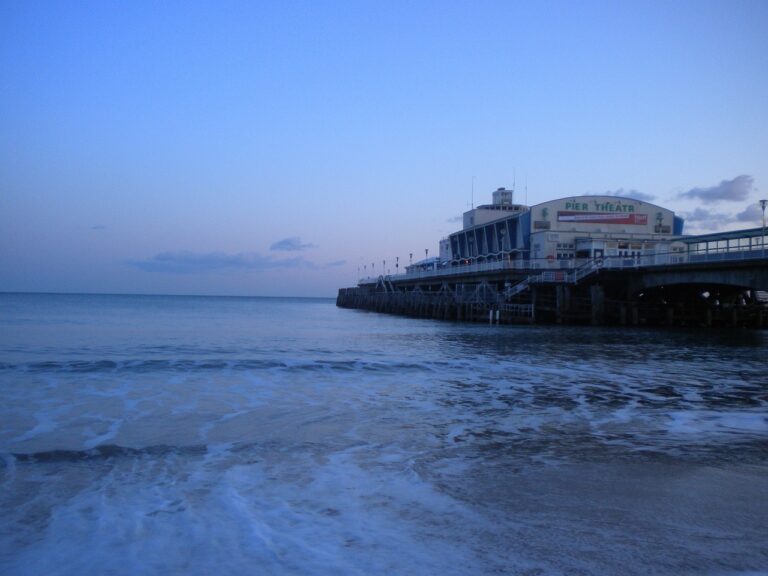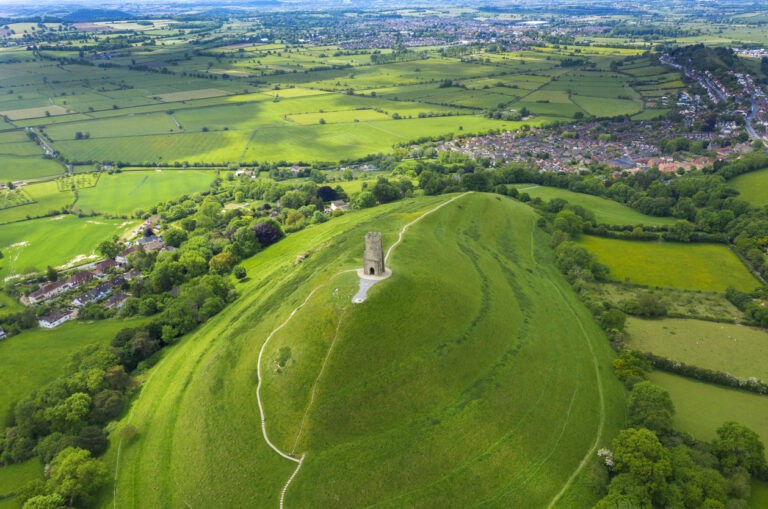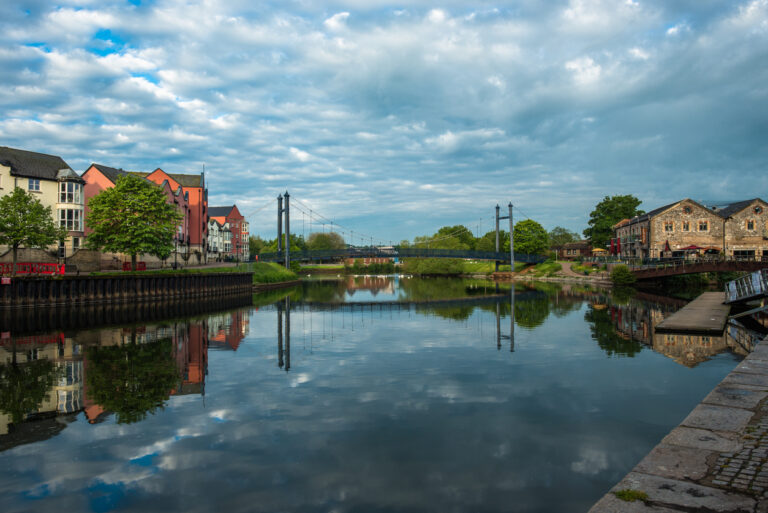How to visit the Roman Baths, Bath: an ancient spa & temple
Standing on the balcony of the Roman Baths, with statues on either side and the deep green pool of water sitting below, views of the abbey in the background is an awe-inspiring experience.
The baths themselves outstanding feat of engineering, one of the tallest buildings in the Roman world, that all originated in their passion for bathhouses and the fact that Bath is the only place in the UK with natural warm springs.
I used to live in Bath, and thanks to the fact that I got free entry to the attraction with my BANES resident card (more on this later!), I’ve visited the Roman Baths more times than I could count.
No matter how many times I’ve walked around them, I always find something new to wonder at.
Recently, I returned to Bath for the day to refresh my knowledge of them (and of Bath’s other attractions!) so I could write this post!
So, here’s everything you need to know when visiting the Roman Baths in Bath.
Roman Baths history
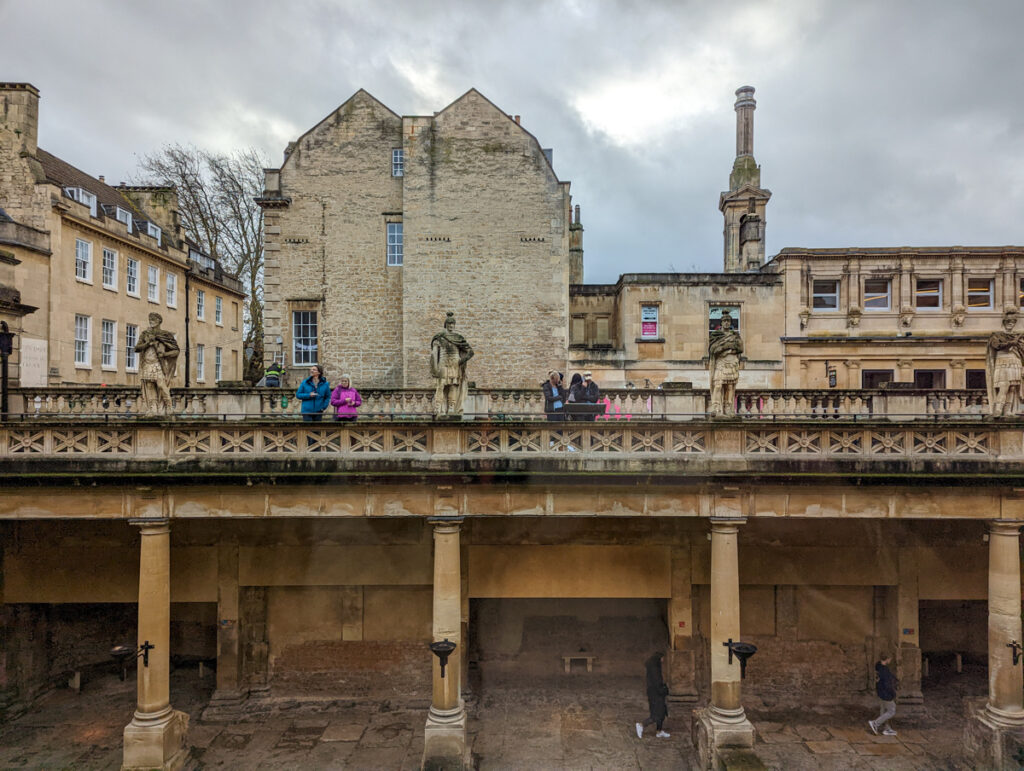
The Romans ventured over to Britain around AD 43, although Juilis Ceaser had ordered a few explorations of the country around 100 years before, which didn’t leave to conquest.
They arrived in Bath by AD 48.
At the time, the area was inhabited by the Donburi tribe, a Celtic group.
The Romans gradually took over, probably attracted to Bath originally because they knew about the hot springs here (the Donburi had been trading with Europeans for many years prior to the Roman invasion).
So, the Romans constructed their bathhouses, as they did in locations all over the world (from Rome itself to Carthage in Tunisia!).
The bathhouses were not just a place of leisure and relaxation, but also a site of worship and socialising.
The building was 20 metres high when it was built – which isn’t much nowadays, but then it was virtually a skyscraper!
The bathhouses were definitely standing by 75 AD, although it’s likely that they were built a few decades before.
By the 4th century, they were fully developed and were one of the most important buildings in Roman Britain.
After the Romans left Britain by 410 AD, the baths fell out of use, gradually being covered over in rubble and eventually fully covered.
It wasn’t until the Victorian era, when the public started to pay more interest to Britain’s heritage, that excavating work began.
They’ve been open to the public since 1897, although of course, the museum came later!
In 2011, the baths completed a £5.5 million redevelopment which aimed to make it more accessible and protect it for the next 100 years.
Where are the Roman Baths?
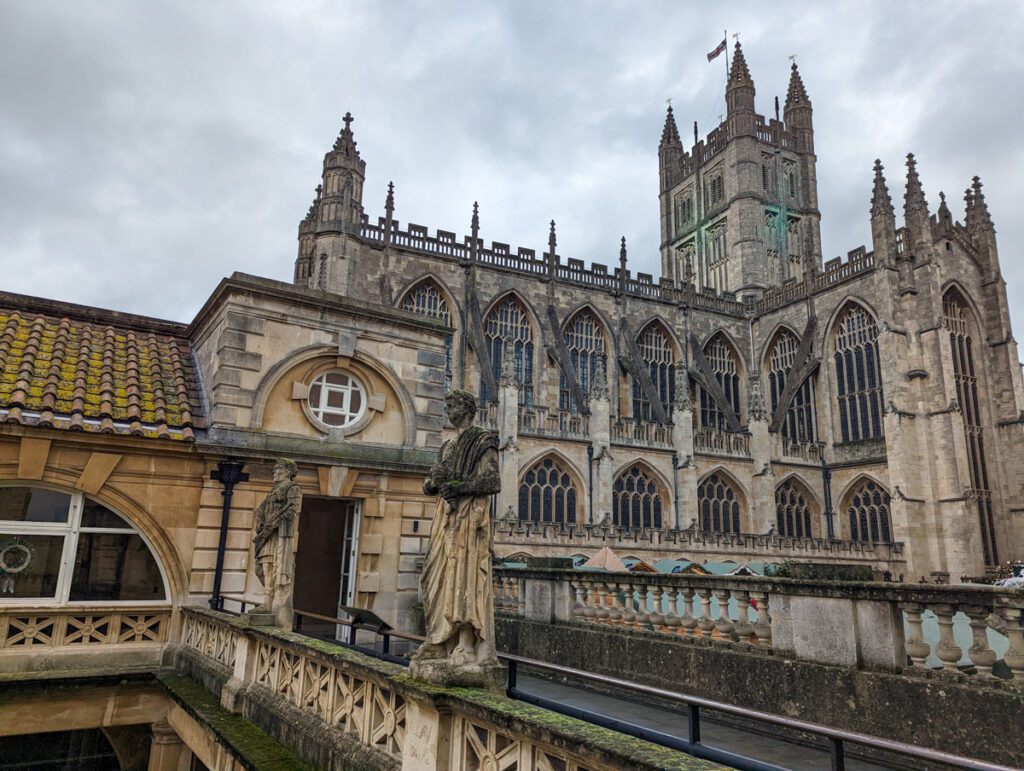
The Roman Baths are right in the heart of Bath’s city centre, next to the abbey and the pump rooms.
They’re just a six-minute walk from Bath Spa Station.
The address is: The Roman Baths, Abbey Church Yard, Bath BA1 1LZ.
Things to do at the Roman Baths
Walk around and take in the views
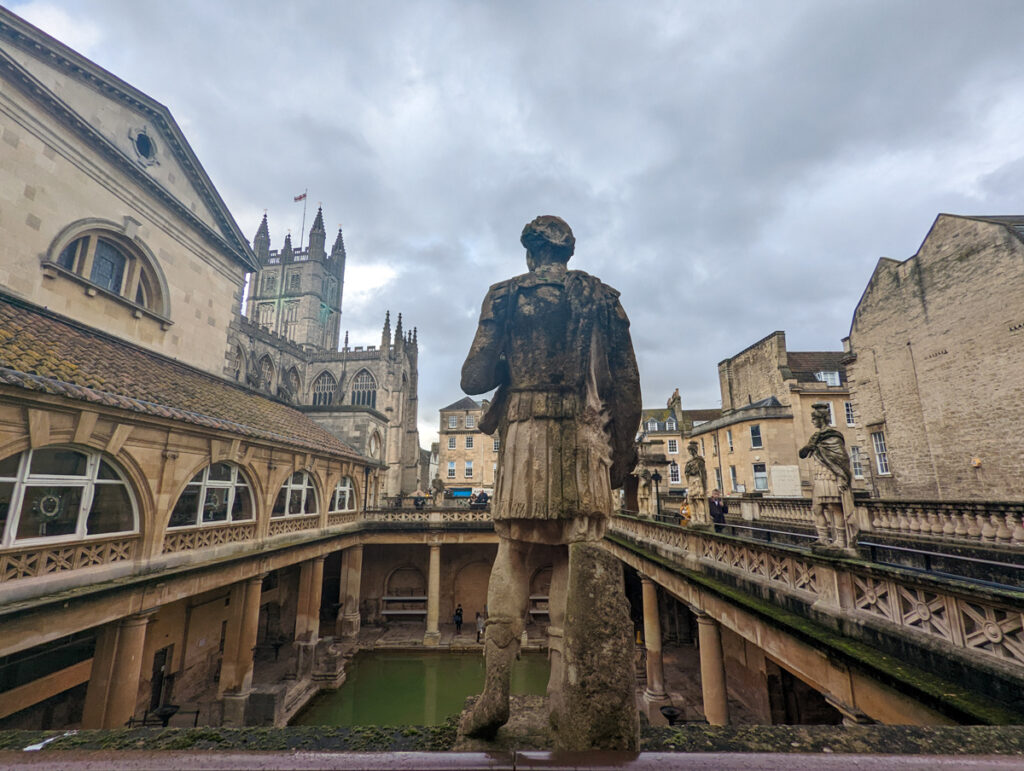
After you leave the ticket office, you’ll have a chance to walk around the upstairs terrace area, where you can look over into the filled pool.
This area is lined with statues; they aren’t Roman (they date back to the Victorian era when the bathhouses were excavated!) but they all represent Roman governors.
As you walk to the far side of the baths, you’ll take in some gorgeous photos of the building, the statues, and the abbey. I love this shot as it shows some of Bath’s layers of history.

Walk through the museum
Once you’ve marvelled at the views, head down into the Roman Baths museum.
Here, you’ll learn lots of detail about the baths and their place in the Roman world.
There are lots of exhibitions that make history come to life, plus opportunities to listen to an audio guide.
Some of the audio guide extracts are made especially for kids, and Bill Bryson has recorded others!
See the Temple pediment and Gorgon’s head
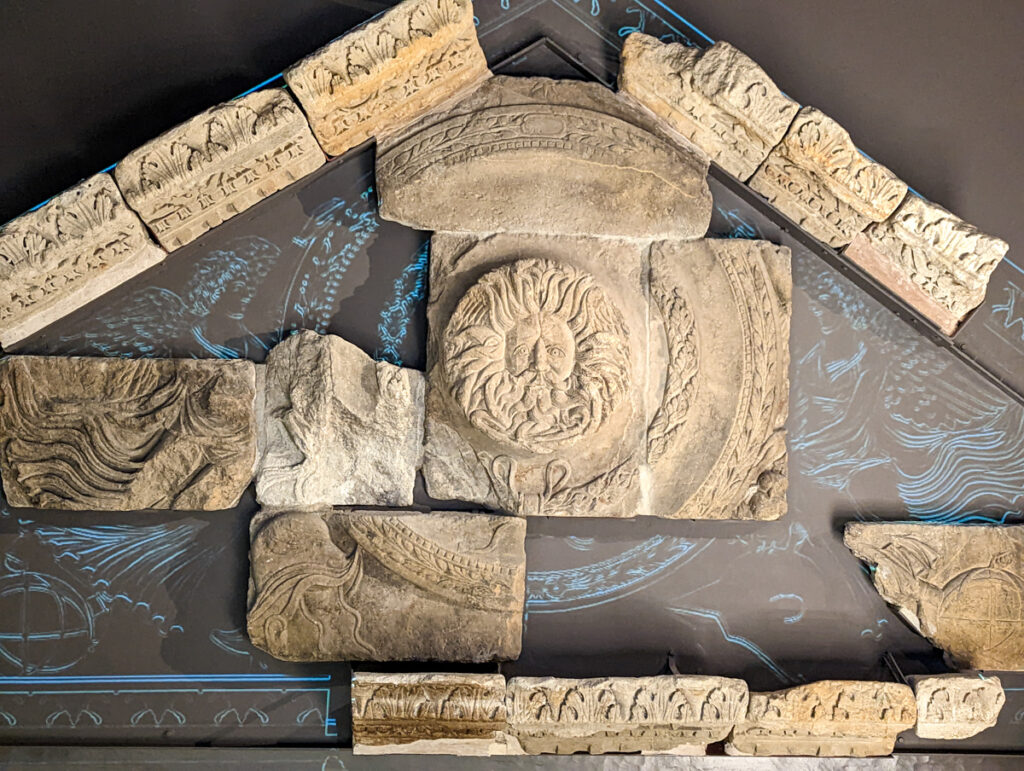
The Temple pediment and Gorgon’s head is a beautifully carved Roman statue that stayed preserved until 1790, when it was discovered.
It’s one of the most impressive Roman carvings in the world, showing incredibly sophisticated workmanship for this age, depicting Gorgon, who was a Greek mythological creature, who was immortalised by becoming the main deity of Bath.
Walk through the temple area
Once you’ve learned all about the Romans, it’s time to see their place of worship! Your tour takes you through the main temple area.
Although the baths are most famous for their spa facilities, this complex was actually foremost a temple, somewhere for people to pray to deities, often Gorgon or Minerva.
Nowadays, the ruins of the temple remain, and you can walk on the elevated flooring above them, finally approaching a statue of Minerva’s head at the end.
Walk out to the Great Bath
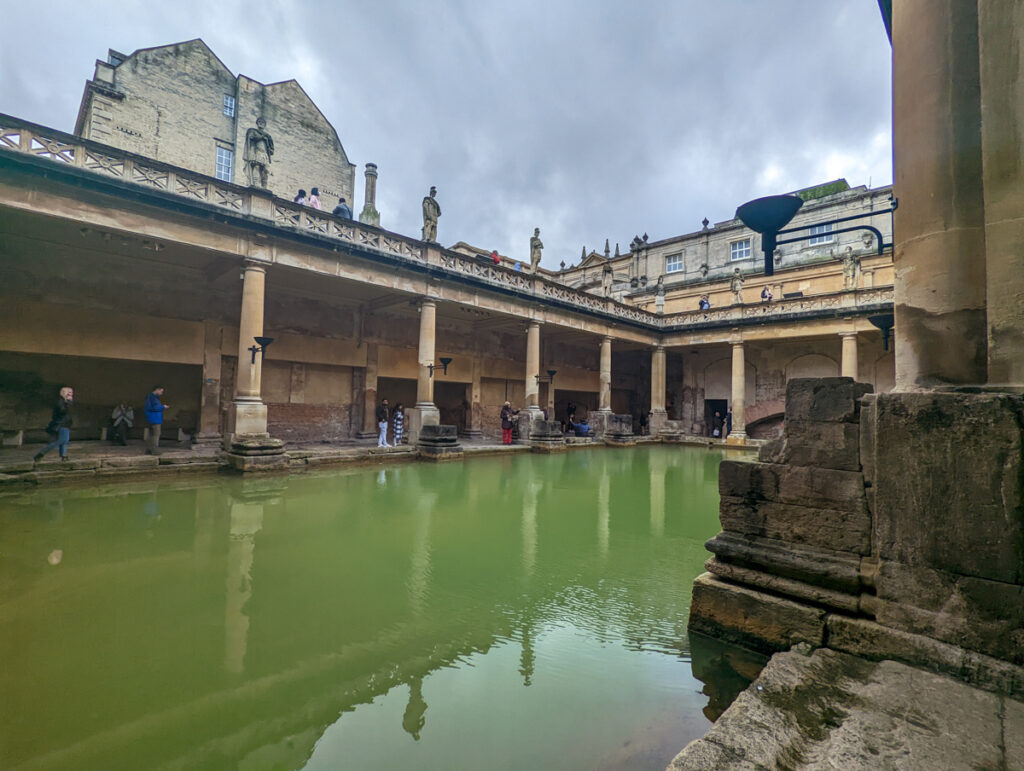
Your tour then takes you outside, to see the brilliantly blue-green pool of the great bath. Take a stroll around the side and admire the architecture!
This bath is synonymous with the city, and you can stand right at the water’s edge to take it all in. You can’t, unfortunately, swim in it – you’ll need to go to the Bath Thermae Spa to do that!
See the east baths
Once you’ve walked around the baths, there will be a sign directing you to the east baths. These are undercover baths that provide an immersive look at what Roman leisure was like, with projectors showing typical bath scenes.
Hear the sacred spring
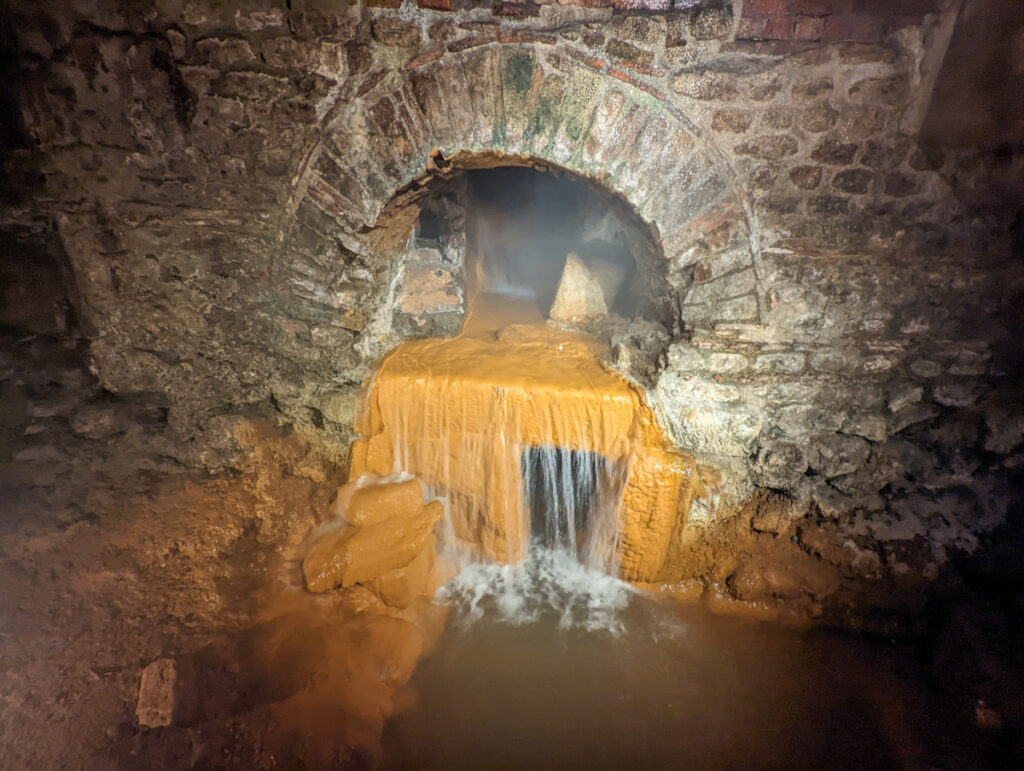
The sacred spring is a waterfall-like feature that gushes from one level of the baths to the other. This is entirely man-made, but it looks natural, and its a great reminder of the epicness of Bath’s hot springs!
Taste some of the water yourself!
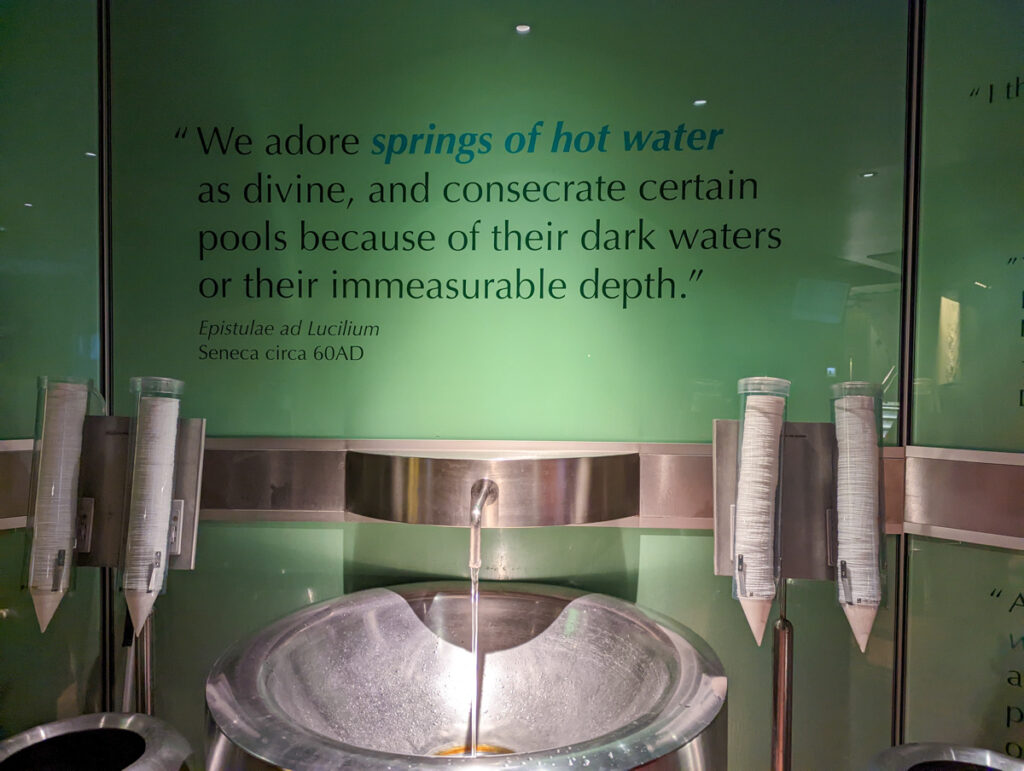
Once you’ve toured the water, why not taste some of it? It’s very mineral-rich, with around 2270 milligrams of minerals per litre, including sulphate, calcium and chloride amongst 20 others.
It’s alleged to have many healing properties – but I’ll be honest, it’s not the best tasting!
Roman Baths visiting information
How much does the Roman Baths in Bath cost?
Standard tickets cost £20.50 at the weekend, or £18.00 on a weekday.
For students and seniors, it’s £19.50 at the weekend or £17.00 on a weekday.
And child rates are £13.00 at the weekend or £10.50 on a weekday.
This includes entry and the use of an audio guide.

Are there any concessions?
Yes, rates are cheaper for students and seniors.
Additionally, Bath residents (who hold a BANES card), full-time students at the University of Bath and Bath Spa University and discovery cardholders get free entry.
Children who have a Blue Peter badge also get free entry.
What are the opening hours?
The Baths usually open at 10 and close at various times throughout the year – in the winter, they usually close around 5:00 pm on weekdays and at about 8:00 pm on weekends.
Where to stay near the Roman Baths
The Gainsborough Bath Spa Hotel is the only British hotel that has on-site access to natural warm spring waters. Here, enjoy a spa village, a restaurant and a bar. All rooms boast high-quality bed linen, dressing gowns and comfortable slippers, along with nespresso coffee machines and flat-screen HD TVs.
The Apex City of Bath Hotel is a five minute walk away and is one of the best-value places to stay in the city. It boasts an indoor pool, gym, restaurant and bar and has comfortable and luxurious rooms.
Z Hotel is a budget Bath accommodation option. Althoguh the rates are low, the rooms are clean and comfortable, with flat-screen wall-mounted TVs and comfortable beds.
You can see all of the best places to stay around Bath here.
Places to visit near the Roman Baths
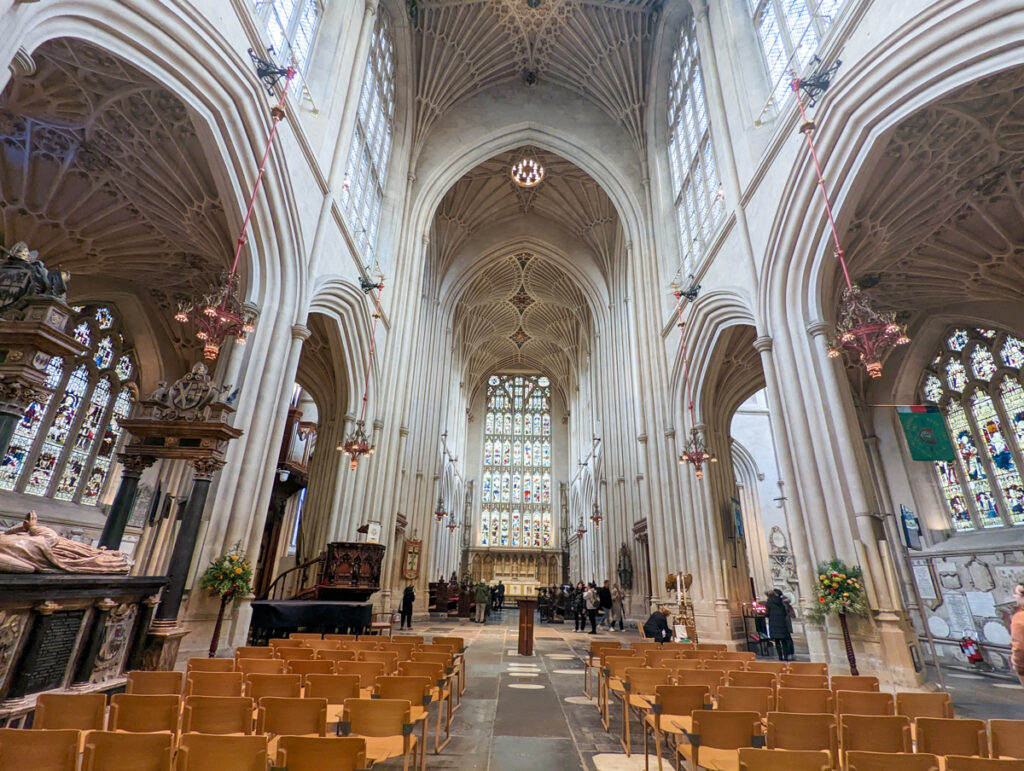
You’re in luck when you exit the Roman Baths, as many of the city’s best attractions are right next door.
Bath Abbey, the city’s main place of worship that has an extensive history spanning back to Medieval times, is literally right next door.
The other side, you’ll find the Pump Rooms, one of the best places in the city for afternoon tea.
You also only need to walk a few steps down the road to see the Thermae Bath Spa!
Are the Roman Baths in Bath worth visiting?
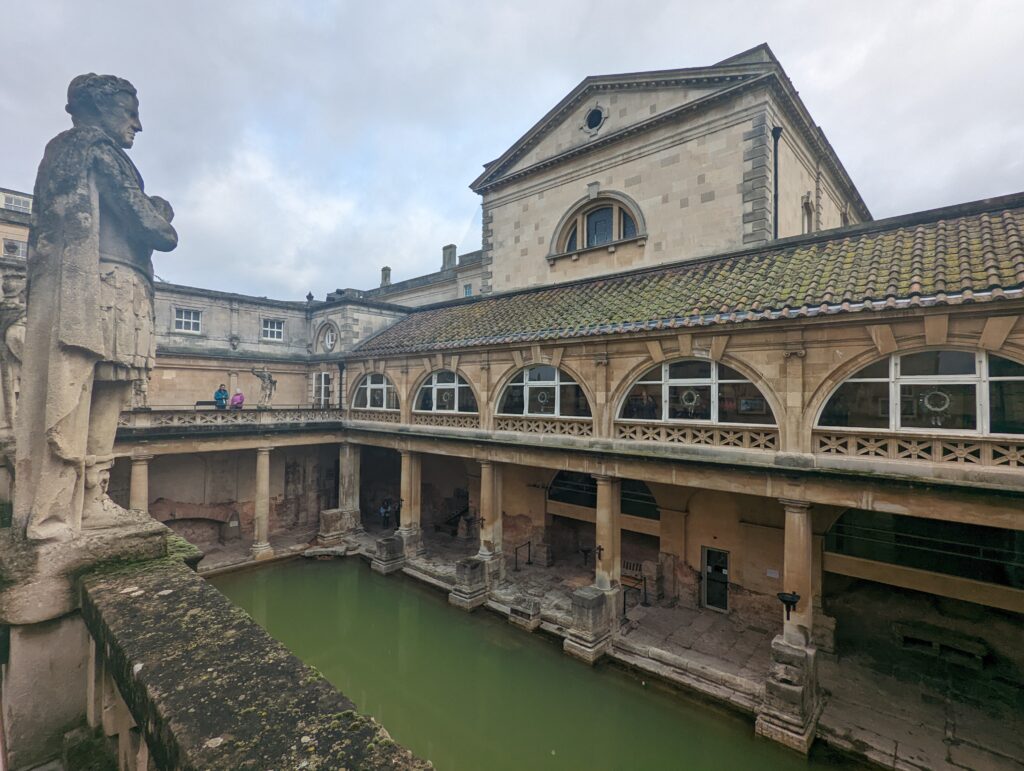
I think so!
They’re one of the most interesting and well-preserved Roman complexes in the country and give a valuable snapshot of what life was like back in these ancient times, which ultimately had huge impacts on the country, some of which are still felt today.
You’ll learn about the Roman lifestyle and see some impressive remains.
You could easily spend 1-2 hours here taking everything in; so it’s definitely worth your time, whether you’re spending a weekend in Bath or even living here!

